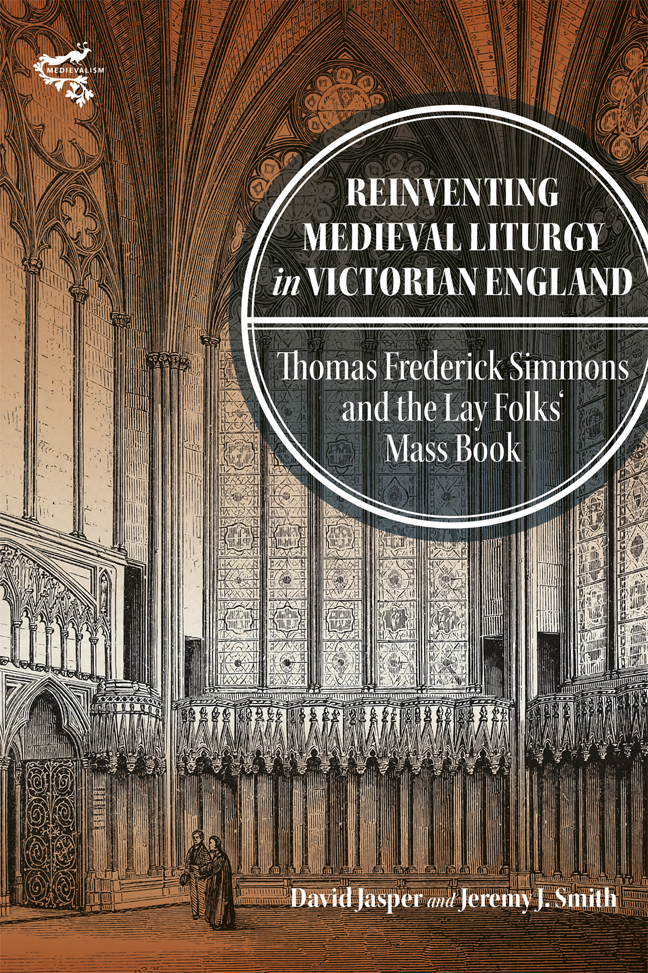 Reinventing Medieval Liturgy in Victorian England
Reinventing Medieval Liturgy in Victorian England Published online by Cambridge University Press: 02 March 2024
Simmons as parish priest, 1853–1884
On 25 January 1853, Thomas Frederick Simmons was licensed as perpetual curate of Holme-on-the-Wolds in the East Riding of Yorkshire; he had clearly been identified as the man to develop the projected new parish of Dalton Holme, which included not only Holme-on-the-Wolds but also nearby South Dalton, both part of the great Hotham estate.
Between 1840 and 1876 some 1,727 new churches were built in England, and not least among them was the grand parish church of St Mary, South Dalton. The old church of St Peter’s was in poor condition2 and on 15 March 1858 work was begun on a new church fifty yards north of the old building. Lavishly financed by the third Baron Hotham, St Mary’s Church was completed in 1861 and on 6 August in the same year, the benefices of Holme-on-the-Wolds and South Dalton were officially united, with Simmons instituted as the Rector of Dalton Holme.
General Beaumont Hotham (1794–1870), Simmons’ patron, was a distinguished soldier – a veteran of the Battle of Waterloo – and it seems probable that military connections through Simmons’ father and brother brought him to Dalton Holme. Lord Hotham was unmarried, devout, and eccentric, and local gossip maintained that he spent his entire fortune on the church to prevent his nephew from inheriting it. Though hardly the lot, Hotham did spend the enormous sum of £25,000 on the new church of St Mary’s. The church was further extended in 1872.
John Loughborough Pearson, the architect, was – as already noted6 – an admired builder of churches in the English Gothic style, later to be known for his work in the Early English style at St Augustine’s, Kilburn (1871), as architect of Truro Cathedral (1880), and for his restorations at Westminster Abbey. Pearson had become a member of the Ecclesiological Society only in 1859, but his work at Dalton Holme quickly attracted the Society’s attention and approval. A review (February, 1862) of St Mary’s Church in The Ecclesiologist praised Pearson’s work, albeit with some qualifications:
The style is Middle-Pointed, of strictly English character, and of a very ornate type…. The absence of a stone roof (considering the sumptuousness of the struc-ture) and of colour, constructional or otherwise, is however, to be regretted.
Pearson was personally a devout man, and his being chosen as the architect of St Mary’s church was not without significance.
To save this book to your Kindle, first ensure [email protected] is added to your Approved Personal Document E-mail List under your Personal Document Settings on the Manage Your Content and Devices page of your Amazon account. Then enter the ‘name’ part of your Kindle email address below. Find out more about saving to your Kindle.
Note you can select to save to either the @free.kindle.com or @kindle.com variations. ‘@free.kindle.com’ emails are free but can only be saved to your device when it is connected to wi-fi. ‘@kindle.com’ emails can be delivered even when you are not connected to wi-fi, but note that service fees apply.
Find out more about the Kindle Personal Document Service.
To save content items to your account, please confirm that you agree to abide by our usage policies. If this is the first time you use this feature, you will be asked to authorise Cambridge Core to connect with your account. Find out more about saving content to Dropbox.
To save content items to your account, please confirm that you agree to abide by our usage policies. If this is the first time you use this feature, you will be asked to authorise Cambridge Core to connect with your account. Find out more about saving content to Google Drive.